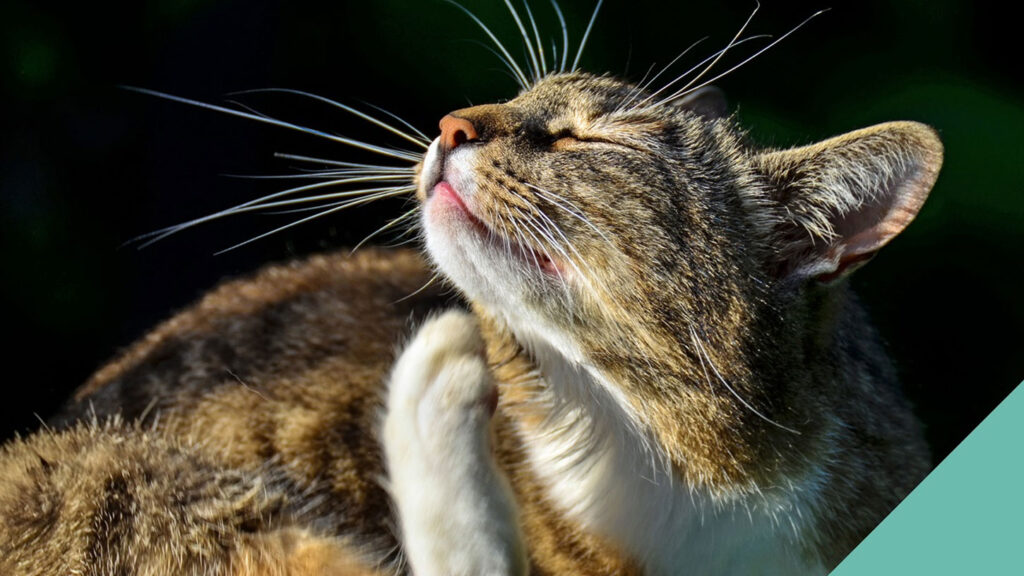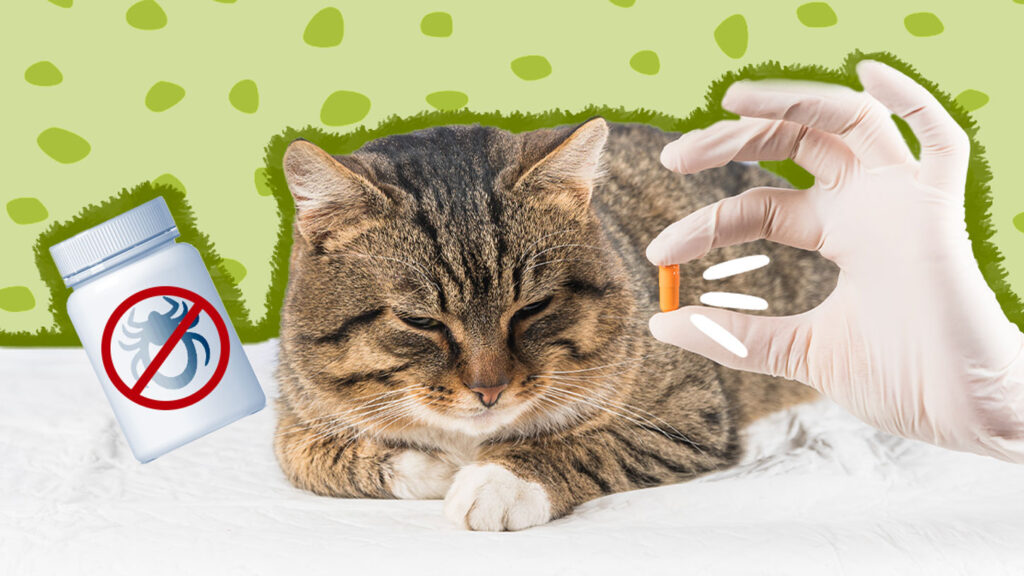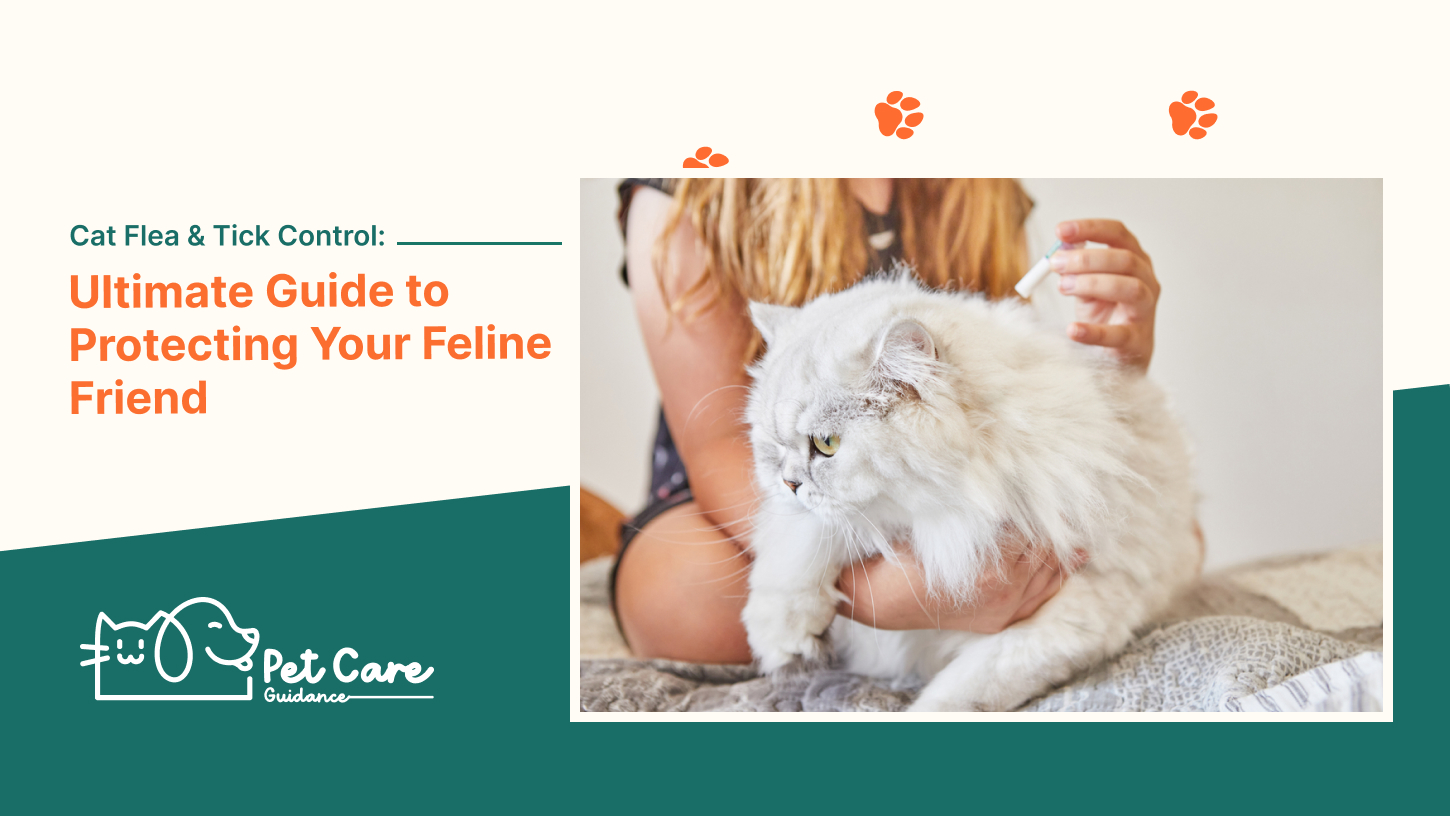Cat flea & tick control is essential for the health of your cat. There are various effective treatments available for both indoor and outdoor cats to prevent fleas and ticks.
Regular monthly treatments, such as Frontline Plus, are recommended to kill fleas, ticks, and chewing lice. It is important to treat all pets in the household simultaneously to ensure effectiveness. Even indoor cats should be treated with flea and tick preventive to prevent infestations.
Bravecto Topical Solution is one of the most highly recommended treatments by veterinary experts. Treatments like Frontline Plus are fast-acting and begin working within hours. Taking proactive measures to protect your cat from fleas and ticks is crucial for their overall well-being.
Importance Of Cat Flea & Tick Control
Fleas and ticks can pose significant dangers to cats. Protecting your feline friend from these pests is crucial for their health and well-being. Fleas can cause a variety of issues, including skin irritation, allergies, and even anemia in severe cases. Ticks, on the other hand, can transmit diseases such as Lyme disease and babesiosis.
Protecting your cat from fleas and ticks is important for a number of reasons. Firstly, it helps prevent your cat from suffering from the uncomfortable symptoms associated with flea and tick infestations. Secondly, it reduces the risk of your cat contracting diseases transmitted by these pests. Additionally, by implementing proper flea and tick control measures, you are also protecting your home and family from potential infestations.
There are various options available for cat flea and tick control, including topical treatments, oral medications, and collars. Consult with your veterinarian to determine the most suitable treatment option for your cat based on their specific needs.

Common Cat Flea & Tick Control Methods
Topical treatments: Topical treatments for cat flea and tick control are commonly used and come in the form of spot-on treatments, sprays, or powders. They are applied directly onto the cat’s skin, usually between the shoulder blades. The pros of topical treatments include their ease of use and effectiveness in killing fleas and ticks. However, some cats may have adverse reactions to the ingredients, and it’s important to follow the instructions carefully and avoid using products meant for dogs.
Oral medications: Oral medications are another option for cat flea and tick control. These medications are typically prescribed by veterinarians and come in the form of tablets or chewables. The pros of oral medications include their convenience and effectiveness in killing fleas and ticks from the inside out. However, some cats may have difficulty taking pills or may experience gastrointestinal side effects.
Flea and tick collars: Flea and tick collars are worn around the cat’s neck and release medication that repels or kills fleas and ticks. The pros of flea and tick collars include their long-lasting protection and ease of use. However, some cats may not tolerate wearing collars, and the efficacy of the collars may vary depending on the brand.
Natural remedies: Natural remedies for cat flea and tick control are gaining popularity among pet owners. These remedies include essential oils, herbal sprays, and diatomaceous earth. The pros of natural remedies include their non-toxicity and potential effectiveness in repelling fleas and ticks. However, it’s important to do thorough research and consult with a veterinarian before using natural remedies, as some may be harmful to cats.
Choosing The Right Cat Flea & Tick Control Product
|
| Effectiveness vs. safety: finding the right balance
When selecting a flea and tick control product for your cat, it is important to find a balance between effectiveness and safety. You want a product that effectively eliminates fleas and ticks, but also one that is safe for your cat to use.
|
| Understanding the active ingredients in flea and tick control products
When choosing a flea and tick control product for your cat, it is important to understand the active ingredients used in these products. Common active ingredients include Frontline Plus, Revolution Plus, Cheristin Flea Treatment, and Advantage II Flea. Each of these ingredients targets and eliminates fleas and ticks in a slightly different way.
|
Steps To Safely Apply Cat Flea & Tick Control Products
Preparing your cat for application
Before applying any flea and tick control products on your cat, it is important to prepare them properly. Start by combing through their fur to remove any tangles or knots. This will ensure that the product reaches all areas of their body. It is also a good idea to trim their nails to minimize the risk of scratching or injuring themselves during the application process.
Proper application techniques for different types of products
The application techniques may vary depending on the type of product you are using. For spot-on treatments, part the fur at the base of the neck and squeeze the product directly onto the skin. For sprays and powders, make sure to evenly distribute the product throughout the fur, focusing on the areas most prone to fleas and ticks.
Ensuring the safety and effectiveness of the treatment
To ensure the safety and effectiveness of the flea and tick control treatment, it is essential to follow the instructions provided by the manufacturer. Avoid using products that are meant for dogs on your cat, as they may contain ingredients that can be harmful to felines. Additionally, monitor your cat for any signs of adverse reactions and consult your veterinarian if you have any concerns.

Maintaining A Flea & Tick-Free Environment For Your Cat
Regular cleaning and vacuuming of your home is crucial in preventing fleas and ticks from infesting your cat’s environment. Make sure to thoroughly clean areas where your cat spends most of their time, such as their bedding, favorite spots, and furniture. Vacuuming helps to remove any existing fleas or ticks and their eggs, reducing the risk of reinfestation.
In addition to regular cleaning, treat your cat’s bedding and favorite spots with flea and tick repellents. Use pet-safe products specifically designed for cats to ensure their safety and effective control of fleas and ticks. These treatments can be in the form of sprays, powders, or spot-on treatments, and they help create a protective barrier against parasites.
When it comes to outdoor precautions, take measures to prevent fleas and ticks from entering your home. Keep your outdoor areas well-maintained by regularly mowing your lawn, trimming bushes, and removing any debris where parasites may hide. Additionally, consider using natural repellents like cedar chips or flea-repellent plants in your outdoor space to deter fleas and ticks from approaching your home.
Monitoring And Prevention For Long-Term Control
Regularly checking your cat for signs of fleas and ticks is essential in maintaining their overall health and well-being. Look for common signs of infestation such as excessive scratching, hair loss, and small black dots on their skin. If you notice any of these signs, it’s important to seek veterinary help immediately to prevent the infestation from spreading.
Creating a flea and tick prevention schedule for your cat is crucial in ensuring long-term control. Consult with your veterinarian to determine the most effective preventive products for your cat. These products should be applied regularly and according to the instructions provided.
Remember that prevention is always better than treatment, so make sure to stay consistent with your prevention schedule to keep your cat safe and protected.
Frequently Asked Questions On Cat Flea & Tick Control
What Is The Most Effective Flea And Tick Treatment For Cats?
The most effective flea and tick treatment for cats is Bravecto Topical Solution. It is recommended by veterinary experts and is suitable for both cats and dogs.
Should Indoor Cats Be On Flea And Tick Prevention?
Indoor cats should be on flea and tick prevention to protect them from getting fleas. Treat them every month or as prescribed by a veterinarian. Treating all pets simultaneously is important for effectiveness.
What Is The Monthly Treatment For Fleas And Ticks On Cats?
The monthly treatment for fleas and ticks on cats typically involves applying a topical product, such as Frontline Plus, containing fipronil and (s)-methoprene. It kills all fleas, ticks, and chewing lice, and is fast-acting within hours. It is recommended to treat indoor cats every month to prevent fleas.
How Often Do Indoor Cats Need Flea And Tick Treatment?
Indoor cats should be treated for fleas and ticks every month or as prescribed. Treating all pets simultaneously is important for effective prevention, and there are various treatments available. Preventing fleas is essential even for indoor cats.
Conclusion
Cat flea and tick control is essential for the health and well-being of our feline friends. By using the right products and implementing regular preventive measures, we can protect our cats from the discomfort and potential health risks associated with fleas and ticks.
Whether your cat is indoor or outdoor, it is important to prioritize flea and tick prevention. With the variety of effective treatments available in the market, you can find the right solution that suits your cat’s needs. Keep your cat safe and happy with proper flea and tick control.


